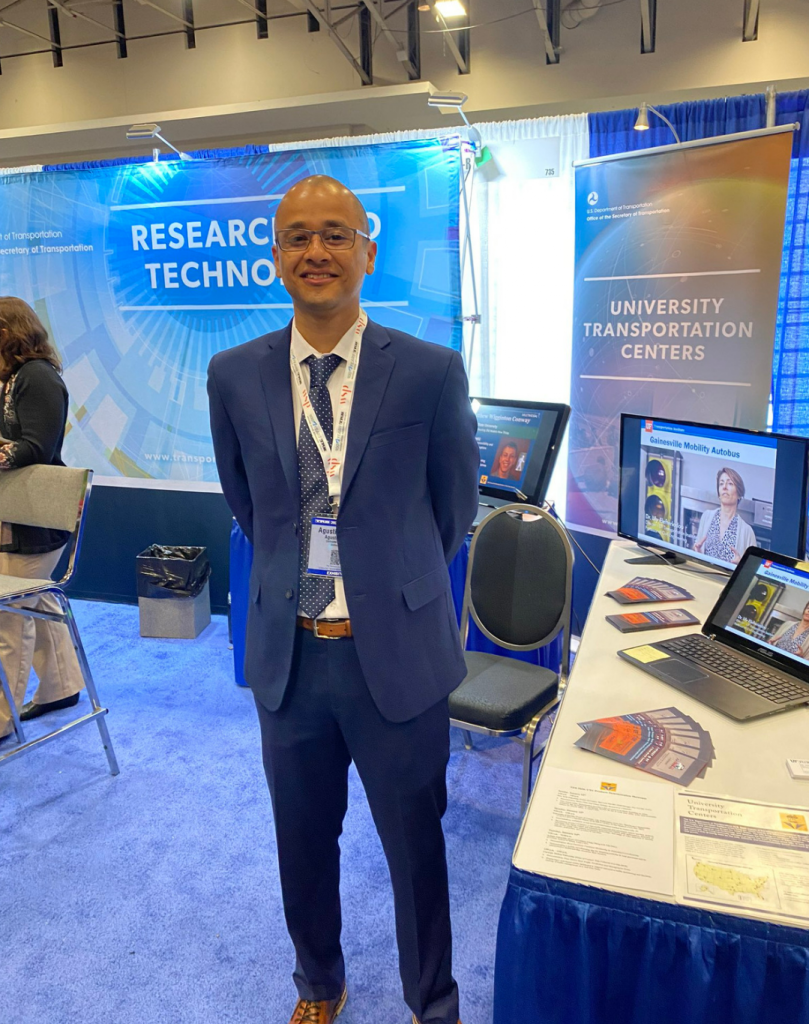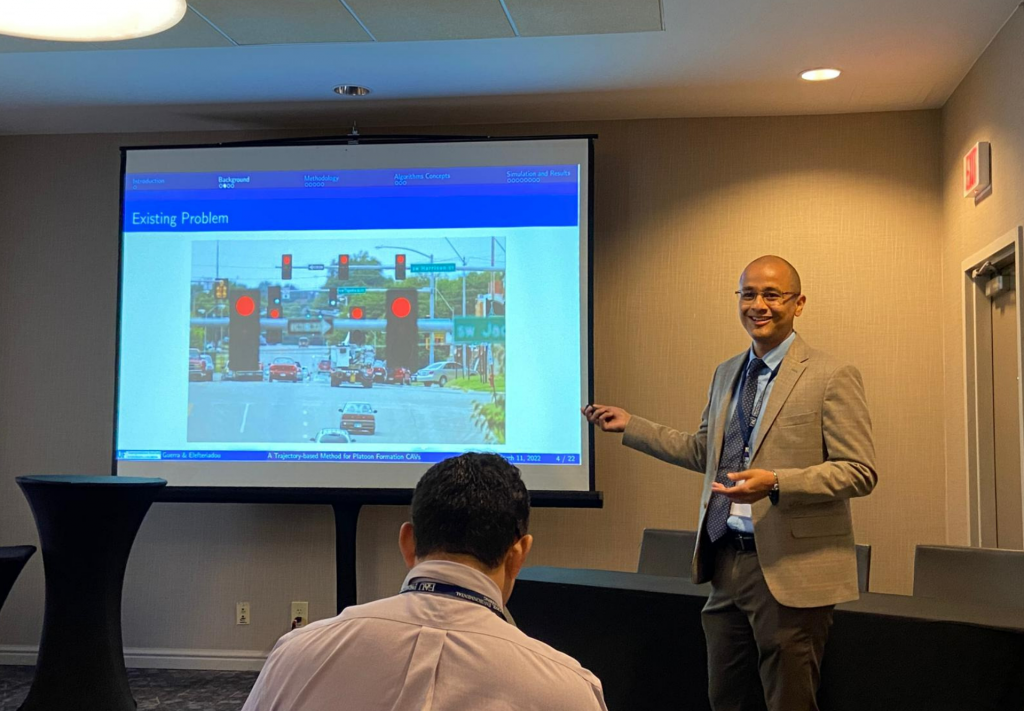By Ines Aviles-Spadoni, M.S., STRIDE Research Coordinator

After spending years living in one of Latin America’s most congested cities, Agustin Guerra, a transportation doctoral student in the University of Florida (UF) Department of Civil & Coastal Engineering, set his sights on pursuing a degree in in transportation engineering.
Guerra’s early years were spent in Panama, the country where he is from. His undergraduate degree was in civil engineering from the Universidad Tecnologica de Panama (UTP). Guerra also pursued a master’s degree in civil engineering from the University of Kansas. After graduation, he worked at a consulting firm where he took part in several transportation projects that now shape transportation in Panama.
Panama is a country in Central America, the home to the Panama Canal, a transportation shipping hub that moves cargo ships to and from the Atlantic and Pacific Oceans.
While the Panama Canal, considered one of the 7th wonders of the modern world by the American Society of Civil Engineers, operates efficiently moving cargo ships through its locks and waterways, vehicular traffic is an issue that Panamanians must contend with daily, especially in its capital, Panama City.
“A normal commute of 20 minutes in Panama can take you 2 hours on a bad day,” he said. “I set my mind on understanding the transportation dynamic, and to do something about the massive congestion issues plaguing transportation systems in general.”
At UF, Guerra is working under the direction on Dr. Lily Elefteriadou, professor and director of the University of Florida Transportation Institute (UFTI) and the STRIDE Center. Guerra has participated in a variety of transportation projects affiliated with STRIDE. Most of his work has been highly technical in nature. For example, Guerra was tasked with developing a logic for optimizing connected automated vehicle (CAV) trajectories in coordinated arterials as a continuation of the AVIAN project.
“Adjusting CAVs trajectories (acceleration speed) it is important because it can reduce the stop and go waves in a signalized arterial,” he said. “Our methodology set a trajectory (speed, acceleration) for each vehicle so they arrive always during the green interval, reducing delays and travel time.
Guerra said that the methodology is computationally efficient compared to other methods that are very challenging to compute in real-time.
The AVIAN project is funded by the National Science Foundation (NSF) and the Florida Department of Transportation (FDOT). AVIAN’s goal is to develop and test software and hardware for optimizing traffic signal control operations along with connected and autonomous vehicles.
Guerra also has a role in STRIDE Project I5 (Evaluation of Advanced Vehicle and Communication Technologies through Traffic Microsimulation). The project’s PI is Dr. Pruthvi Manjunatha, manager of the UFTI’s I-STREET initiative. I-STREET is a real world, open road testing area that includes roads in Gainesville and at UF. Different types of technologies are tested in this open road environment, which include a variety of road users such as pedestrians, bicyclists, e-scooters, transit, and cars. In Project I5, Guerra is integrating an arterials methodology he created while working on the AVIAN project into a microsimulation platform. He wants to better understand the impact of CAVs in traffic streams.

“Integrating this methodology in a microsimulation package will help us to understand the impact that CAVs will have on traffic stream such as the effects on travel time, delays, emissions, and so on,” he said. “It will also help us to compare different methodologies.”
Currently, Guerra is working on integrating his methodology along with the methodologies created by Dr. Ehsan Amini, a UF graduate, and doctoral candidate Luan Carvalho, who are other researchers on the team.
“We will later compare which methodology achieves more benefits or evaluate which methodology would better represent the real impact of CAVs,” Guerra said.
Guerra also work on a STRIDE project titled Utilization of Connectivity and Automation in Support of Transportation Agencies’ Decision Making (STRIDE Project G3). This project was led by Dr. Mohammed Hadi of Florida International University (FIU). The project has since been completed, but Guerra’s role focused on evaluating how driver behavior changes when vehicles have the capability to talk to traffic signals, including how this behavior can be simulated. Simulation is used by traffic professionals to support decisions.
“It is important to understand how driving behavior is affected because that will help traffic professionals to make the right decisions when evaluating solutions to traffic problems,” he said. “For example, whether the driving behavior is affected when drivers receive information about the signal phasing. The signal plan should be timed according to that behavior, otherwise it could lead to lost times.”
So why is all this work so important? What are the practical implications and benefits to society? We go back to Guerra’s initial desire to pursue transportation as a career path – to have to knowledge and tools to make our transportation system more accessible and efficient via new technologies.
“I think that the main takeaway is that there are possibilities to improve our transportation system by implementing technologies such as CAVs,” Guerra said.
While there are still challenges related to connected and autonomous vehicle technologies (i.e., computation times, latencies in communication, accuracy of sensors, and others), he is hopeful that the multidisciplinary nature of the research teams associated with each of these STRIDE projects will develop solutions for a more efficient transportation future.
“Each of these challenges are being addressed by several researchers, and I believe that with continuous advances, humanity will benefit by having at their disposal a more efficient traffic system where people will have more freedom to move around.”